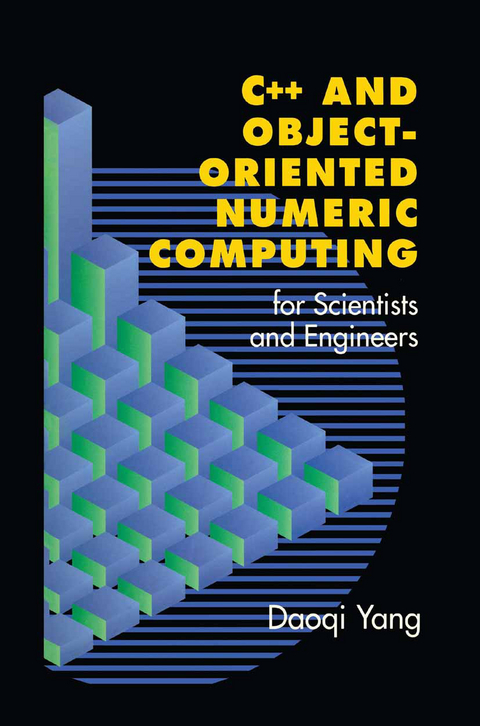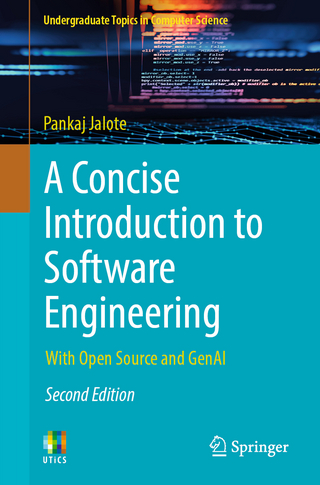
C++ and Object-Oriented Numeric Computing for Scientists and Engineers
Springer-Verlag New York Inc.
978-1-4612-6566-5 (ISBN)
1 Basic Types.- 1.1 A Sample Program.- 1.2 Types and Declarations.- 1.3 Basic Types.- 1.4 Numeric Limits.- 1.5 Identifiers and Keywords.- 1.6 Exercises.- 2 Expressions and Statements.- 2.1 Scopes and Storage Classifications.- 2.2 Expressions.- 2.3 Statements.- 2.4 Fibonacci Number.- 2.5 Exercises.- 3 Derived Types.- 3.1 Constants and Macros.- 3.2 Enumerations.- 3.3 Arrays.- 3.4 Structures.- 3.5 Unions and Bit Fields.- 3.6 Pointers.- 3.7 References.- 3.8 Functions.- 3.9 Program Execution.- 3.10 Operator Summary and Precedence.- 3.11 Standard Library on Mathematical Functions.- 3.12 Polynomial Evaluation.- 3.13 Trapezoidal and Simpson’s Rules.- 3.14 Exercises.- 4 Namespaces and Files.- 4.1 Namespaces.- 4.2 Include Files.- 4.3 Source Files and Linkages.- 4.4 Some Useful Tools.- 4.5 Standard Library on Strings.- 4.6 Standard Library on Streams.- 4.7 Iterative Methods for Nonlinear Equations.- 4.8 Exercises.- 5 Classes.- 5.1 Class Declarations and Definitions.- 5.2 Copy Constructors and Copy Assignments.- 5.3 Friends.- 5.4 Static Members.- 5.5 Constant and Mutable Members.- 5.6 Class Objects as Members.- 5.7 Array of Classes.- 5.8 Pointers to Members.- 5.9 Numeric Methods for Ordinary Differential Equations.- 5.10 Exercises.- 6 Operator Overloading.- 6.1 Complex Numbers.- 6.2 Operator Functions.- 6.3 Vectors and Matrices.- 6.4 Explicit and Implicit Conversions.- 6.5 Efficiency and Operator Overloading.- 6.6 Conjugate Gradient Algorithm.- 6.7 Exercises.- 7 Templates.- 7.1 Class Templates.- 7.2 Function Templates.- 7.3 Template Source Code Organization.- 7.4 Standard Library on Complex Numbers.- 7.5 Standard Library on valarrays.- 7.6 Standard Library on Numeric Algorithms.- 7.7 Efficient Techniques for Numeric Integration.- 7.8 Polynomial Interpolation.- 7.9 Exercises.- 8Class Inheritance.- 8.1 Derived Classes.- 8.2 Abstract Classes.- 8.3 Access Control.- 8.4 Multiple Inheritance.- 8.5 Run-Time Type Information.- 8.6 Replacing Virtual Functions by Static Polymorphism.- 8.7 Exercises.- 9 Exception Handling.- 9.1 Throw and Catch.- 9.2 Deriving Exceptions.- 9.3 Catching Exceptions.- 9.4 Specifying Exceptions in Functions.- 9.5 Standard Exceptions.- 9.6 Exercises.- 10 Standard Libraries on Containers and Algorithms.- 10.1 Standard Containers.- 10.2 Standard Algorithms.- 10.3 Standard Function Objects and Adaptors.- 10.4 Exercises.- 11 Linear System Solvers.- 11.1 Matrix Storage Formats.- 11.2 A Class Hierarchy for Matrices.- 11.3 Iterative Algorithms.- 11.4 Gauss Elimination.- 11.5 Finite Difference Method for Partial Differential Equations.- 11.6 Exercises.- References.
¿This is one of the few good application-oriented C++ books that I have come across for students and professionals in mathematics, science, and engineering....Yang makes it attractive to all professionals in these fields and promotes the use of good objects-oriented programming practices....This book is complete and well written....it can promote good design practices amoud students in science and engineering. Its precision can make it a valuable reference for professionals in these areas.¿¿ACM COMPUTER REVIEWS
| Zusatzinfo | XVIII, 440 p. |
|---|---|
| Verlagsort | New York, NY |
| Sprache | englisch |
| Maße | 155 x 235 mm |
| Themenwelt | Mathematik / Informatik ► Informatik ► Programmiersprachen / -werkzeuge |
| Informatik ► Theorie / Studium ► Compilerbau | |
| Mathematik / Informatik ► Mathematik ► Analysis | |
| Naturwissenschaften ► Physik / Astronomie ► Allgemeines / Lexika | |
| ISBN-10 | 1-4612-6566-5 / 1461265665 |
| ISBN-13 | 978-1-4612-6566-5 / 9781461265665 |
| Zustand | Neuware |
| Informationen gemäß Produktsicherheitsverordnung (GPSR) | |
| Haben Sie eine Frage zum Produkt? |
aus dem Bereich


